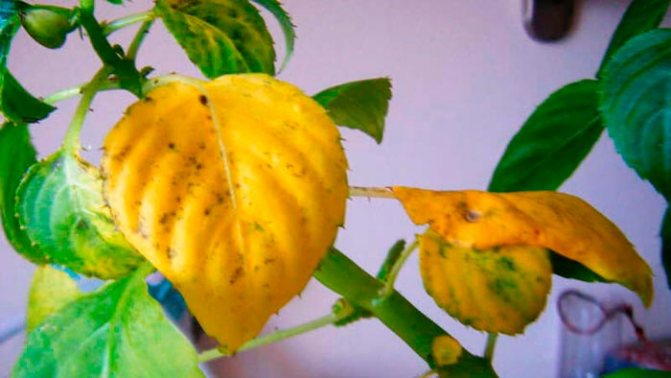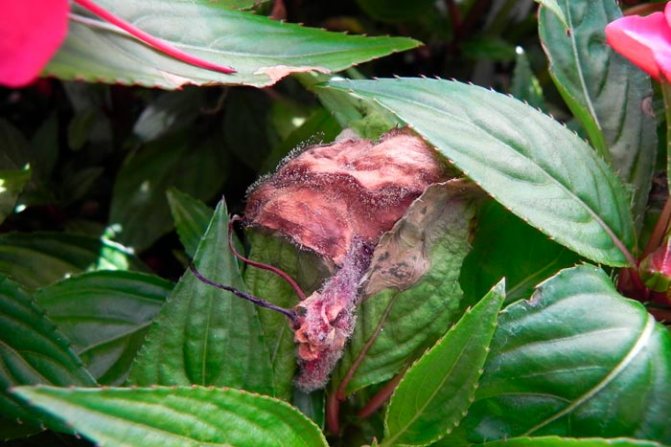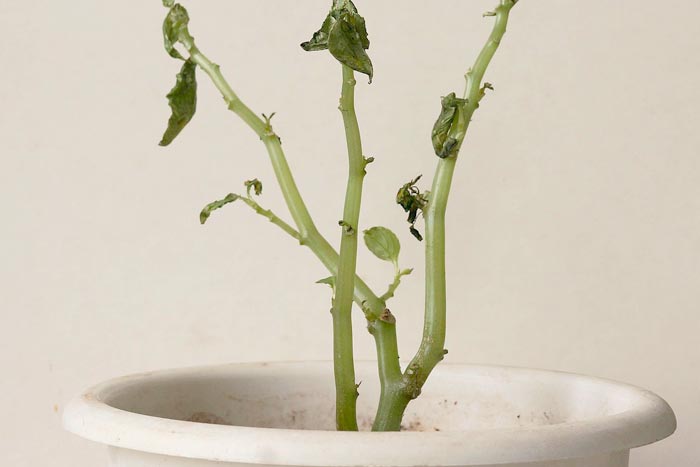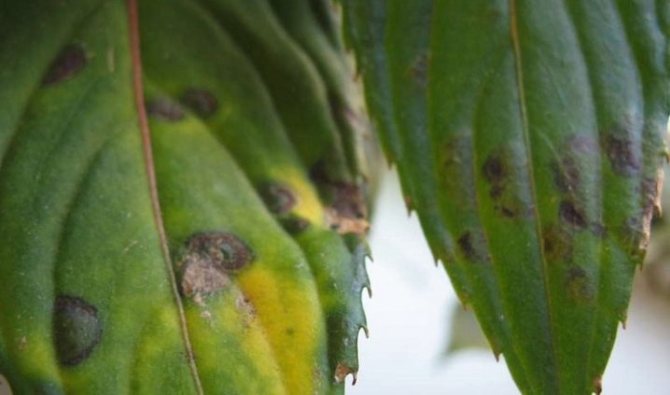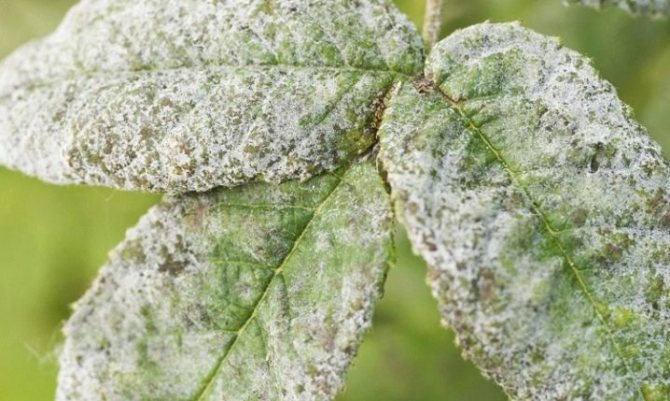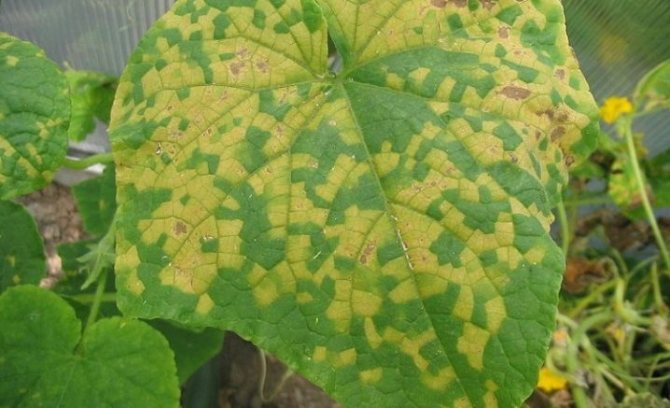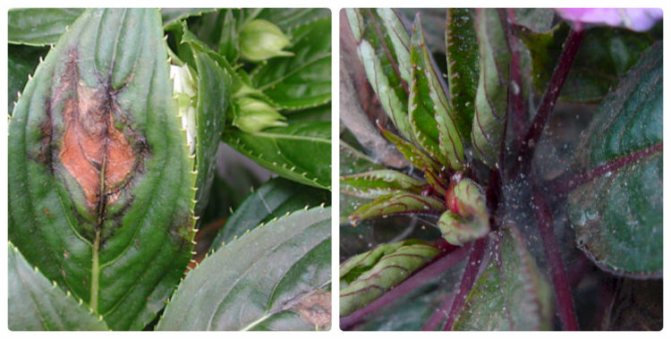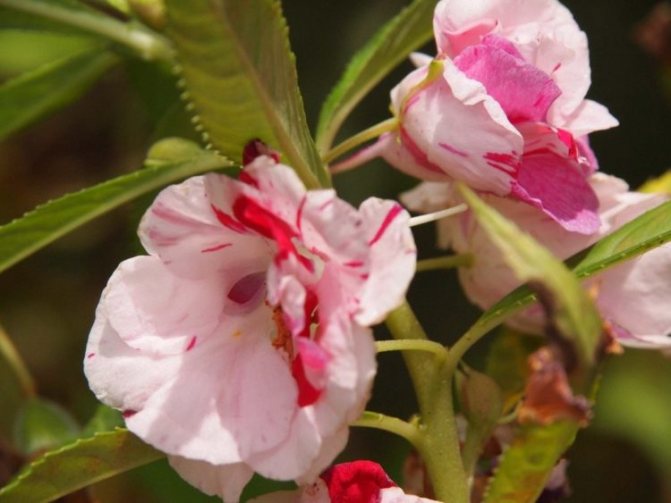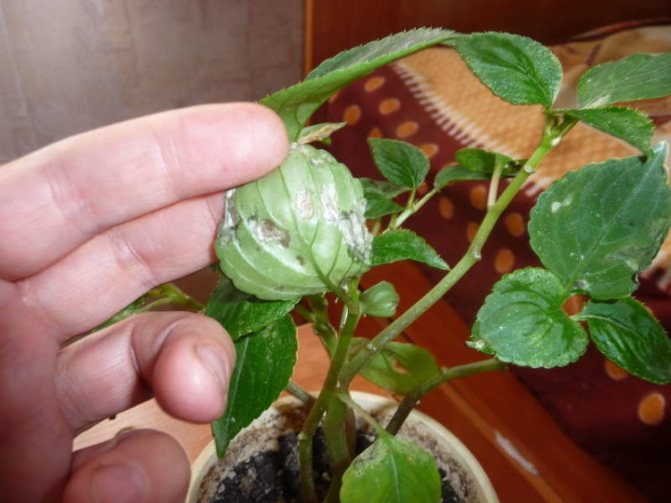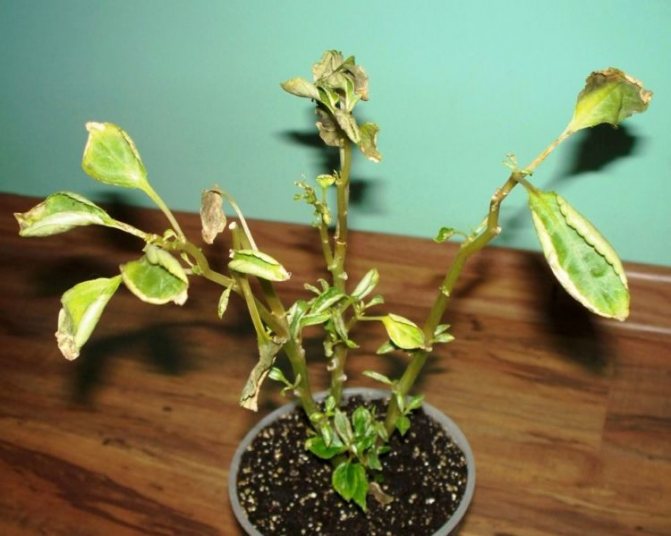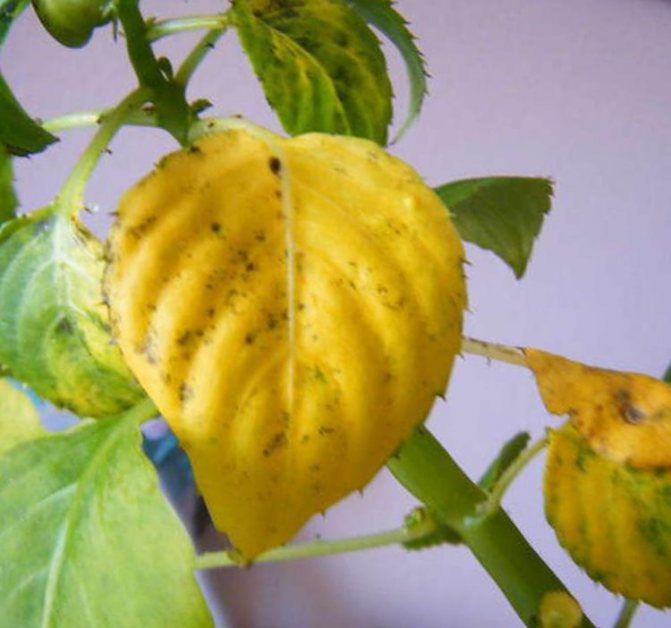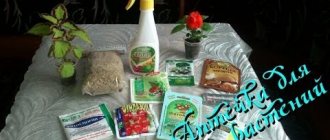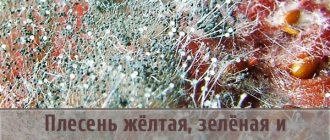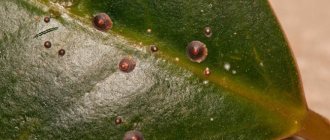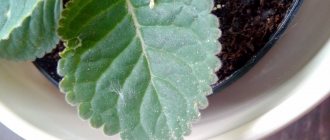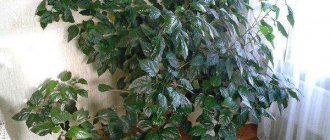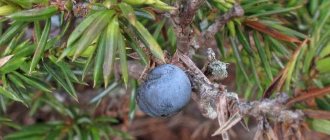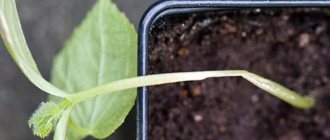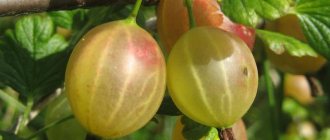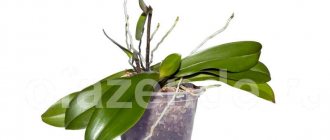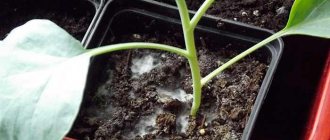Balsam, a member of the balsam plant family, is an unusually delicate flower. You can find very funny names of this plant in common colloquial jargon. He, it happens, is called Liza bustle due to the fact that the plant blooms all year round, or Vanka is wet due to the fact that the plant is very moisture-loving. In addition, balsam is very fond of light and heat, which it needs to be provided in sufficient quantities. Therefore, do not be lazy to put balsam on the windowsill in warm spring and summer money, and in winter, additionally dedicate and protect the plant from drafts.
Often, balsam develops many diseases to which it, like other plants, is susceptible. One of the manifestations of a clearly unhealthy plant is the curling of the leaves of the flower. The reason may lie in several aspects at once, and, both separately and together. You should determine exactly the conditions that have been violated in you, so that you can then figure out how to restore balsam at home.
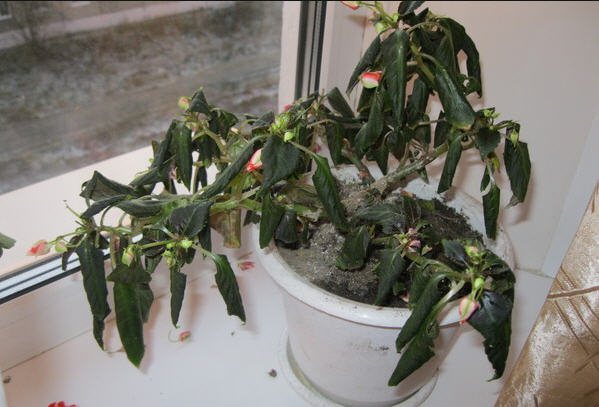
Chapter 1. Reasons for the dropping and drying of balsam leaves
The most common reason can be considered the presence of a spider mite on the plant. Surprisingly, this pest is so "corrosive" that it is simply impossible to get rid of it with the help of one treatment of the plant. Whichever remedy you use, some of the larvae will remain and will soon begin to harm the balsam again. Therefore, use strong products when processing. It is recommended to process 3-4 times, if possible, every week.
When the balsam is located near the radiator or next to the stove heating, its leaves from too dry air will surely begin to dry. If this is not noticed in time and the plant is not removed to a place where the temperature is much lower, but it is not cold there, the balsam will shed a lot of leaves, and then completely die.
Low air humidity. It happens that the room is ventilated regularly and the heating is normal, but the air humidity is still too low. Balsam doesn't like it very much. To correct this problem, you need to spray the balsam leaves with water twice a day, and spray a small amount of fresh water around the plant.
With frequent and abundant watering, the balsam will begin to dry out, this phenomenon will begin with the leaves. This also happens in the event of a "drought". To "guess" with watering, you need to water as soon as the soil starts to dry out a little, but at the same time it will remain moderately moist and moderately dry. Although, if the room is too hot, and the air is often dry, then, according to "experts", it is impossible to fill such a plant in such a situation.
When balsam grows for a long time in the same soil, it takes from it almost all the substances necessary for normal development and growth. Soon there is a lack of these substances, as evidenced by the leaves drying up on the plant. In this case, only top dressing will help, or, in extreme cases, a transplant.
Balsam grows in almost any conditions and in any room, but it does not tolerate strong exposure to sunlight. It would be nice to place the balsam in partial shade, where there is enough sun and there will be no burns. In the hot sun, the leaves will begin to dry immediately.
Reproduction of balsam at home
The plant propagates by seed and cuttings.
Balsam from seeds at home
Mix the tiny seeds with fine sand and press into a wet peat-compost mixture. Cover with glass or plastic and keep at 22 ° C. Spray the soil with water periodically to keep it from drying out.
As soon as the seeds germinate (after 3-4 weeks), the cover is removed. Place the seedlings in a place with bright, diffused light. When the first 3-4 leaves appear, the seedlings dive and plant in separate small pots. In grown plants, the top is pinched.
Propagation of balsam by cuttings
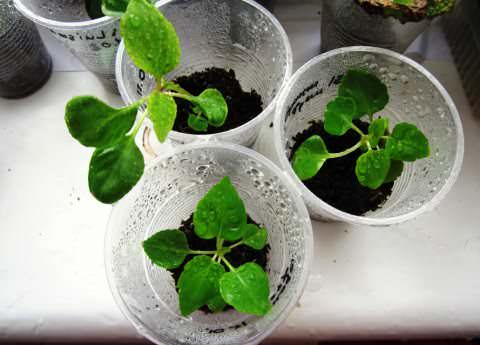

Since hybrid forms, when propagated by seeds, do not inherit the decorative qualities of the mother plant, cuttings are the main method of propagation. Each 5-8 cm stalk after cutting should have no more than 4 leaves, the lower ones are cut off.
It can be rooted both in water and in an earthen mixture. In the first case, the cuttings are placed in water and when the roots appear 1-2 cm long, they are planted in separate pots. In the second case, the cuttings are buried in a mixture of equal parts of peat, sand and perlite.
Chapter 2. Prevention
Balsam grows in almost any conditions and in any room, but it does not tolerate strong exposure to sunlight. It would be nice to place the balsam in partial shade, where there is enough sun and there will be no burns. In the hot sun, the leaves will begin to dry immediately.
Often balsam leaves begin to dry out if the plant grows in soil of very poor quality. The root cannot develop as expected, which leads to drying out. In any case, it is better to remove dried leaves from balsam. The balsam itself must be periodically inspected for pests. You need to try to prevent mass drying of the foliage, finding the cause and eliminating it as early as possible!
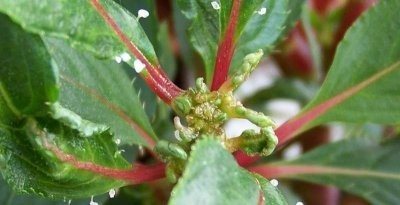

Houseplants are often subject to a variety of diseases and pests. Balsam is no exception.
Improper or insufficient care often leads to the fact that the flower weakens and becomes susceptible to disease.
To avoid disease and pests, you need to know how to quickly detect infestation and prevent or cure it.
Caring for indoor balsam
Lighting
The crop tolerates low light conditions when planted outdoors. However, as a houseplant, balsam requires bright diffused light, otherwise flowering will not start or it will be poor, the shoots will stretch out and weaken, and the leaves will become small.
The best exposure is the east or west windows. In late autumn and winter, with a lack of sun, it is advisable to rearrange the pot to the south side.
Watering
The most important factor in growing indoor balsam is adequate soil moisture. The plant is very fond of water, but do not overdo it with watering, as waterlogging of the roots causes the development of rot.
The soil should always be moderately moist, even the slightest drying out of the earthen coma leads to wilting of the flower bush, the fall of foliage and flowers, and greatly weakens the plant.
Balsam pests
Spider mite
Signs of the appearance of a spider mite are yellow specks on the surface of the leaves. If you do not engage in treatment, then these specks will develop into large spots that will be discolored and dry.
Spider mites are small insects that live on the inner surface of leaves.
Typically, the appearance of a spider mite is caused by dry air and elevated temperatures in the room. Therefore, for prevention, constantly spray the plant with water.
To avoid the spread of the pest, the affected parts of the flower must be removed. If the lesions are still mild, you can rinse the leaves with soapy water or mineral oil.
If the disease is already severe enough, the leaves must be processed "Fitoverm", "acarin", "vertimek", "lightning" or other drugs.
Whitefly
Whitefly is a small insect, two to three millimeters in size with white wings, insect larvae are also white and they do the most harm.
The disease can be noticed by the yellowing of the leaves and the presence of specific sticky secretions on them, you can also see insects on the inner and outer sides of the leaves.
Pests, diseases and adverse conditions
Watering balsam must be approached with all responsibility, so that there was enough moisture, but not excessive, especially in winter. Watering should be done sparingly, but regularly spray the leaves, so that no matter what the spread of the fungus occurs. With an excess of moisture, the earth begins to rot, creating the necessary conditions for the appearance of a fungus. In this case, you need to, as soon as possible, transplant into another pot, with new soil and a lot of drainage. If the plant is badly damaged, then it is better to carry out cuttings and grow a new healthy plant.
For balsam, the scabbard is extremely dangerous. If you find "tubercles" of the scabbard, you must mechanically remove them. And then treat the plant with alcohol or soap solution, possibly using a soap-kerosene emulsion. If the lesions are significant, then the following chemicals can be used: Aktara, Actellik or Bankol.
Spider mites are also dangerous. Very often, the cause of the appearance is excessively dry air or proximity to diseased plants. The mite can be seen on the leaves in the form of thin cobwebs. The parasite can be destroyed with the previously indicated drugs plus Neoron or Agravertin.
If the leaves turn yellow and fall off, this is a sign of the appearance of a whitefly - a tiny white fly. It should be noted that it is not adults that harm the flower, but their larvae, similar to aphids. When the leaves of the infected balsam are turned over, many small insects can be seen on the back of the leaf, secreting a sweet juice, making the leaves appear sticky. In the fight against pests, the same drugs work effectively as in the case of the scabbard and tick, plus Fitoverm. From folk remedies, a soap solution from laundry soap, a solution from dishwashing detergent and onion tincture has proven itself well.
How to revive a flower?
For


in order to reanimate an already damaged flower, it is necessary to remove the infected areas. The plant itself must be treated with special preparations that help get rid of insects.
If you are afraid of repetition, re-process after 5-6 days. This will allow you to get rid of insects, which in different phases of the life cycle may be immune to the components of such drugs.
If you become a problem gray or root rot, then limit watering until the soil is completely dry.
Balsam is a rather finicky, but beautiful houseplant. It will be easy to grow it if you follow all the requirements for watering, lighting and temperatures.
Next, you will see a photo of Balzamin's diseases and pests:
The leaves of indoor balsam turn yellow: why is this happening and how to help it?


In practice, absolutely any grower can encounter yellowing of the leaves of balsam. This problem can be connected with completely different reasons. For example, the cause of yellowing can be improper watering, or various pests.
Many cannot distinguish yellowing of leaves due to improper care from the natural discharge of the leaves. Therefore, below we will tell you how to determine why balsam leaves turn yellow and fall, what to do and how to treat, as well as methods of struggle and their prevention.
Useful video
In this video, you will learn more about pests and diseases:
Useful materials
- Below is a list of articles that may be of interest to you:
To ask a question, find your plant in our encyclopedia, see the available questions and answers. If there are no answers, please create a new message.
Still not cutting petunias? In vain, you know! They will only be more beautiful from this. Indeed, over time, petunias, whether they are spray, am.
What association do you have when you mention Sri Lanka? Tea, of course. This year I managed to visit the state.
Description of the plant
First, let's tell you what this plant is. Balsam is a member of the family of annual or perennial herbaceous plants of the Balsamin family, although some species of this plant may be subshrubs. Balsam originates from the subtropics and tropics of Africa and Asia, also certain species can be found in Central Asia.
Since its introduction to Europe in 1596, it is the most popular houseplant. The plant itself has long erect stems, reaching a length of up to 50 cm and is a long-flowering plant. Stems are smooth and branched.
Leaves can be lanceolate and oval in shape, and also reach a length of 8-12 centimeters. The color of the petals in nature is red and pink, while hybrids have all colors except yellow and blue.
The main reasons and methods of solution
The reasons for yellowing and falling leaves can be:
- direct sunlight on foliage;
- tobacco smoke;
- insufficient lighting;
- lack of moisture;
- low room temperature;
- dry air;
- pests.
All these reasons are the result of improper plant care. Once a supportive environment and proper care are in place, the problem will disappear.
Humidity
Balsam does not need high humidity. It should be within 60%. It's another matter if the room is hot and dry, and the flower sheds its leaves. The reason may be a heater located nearby, or a battery above which, on the windowsill, there is a plant.
To create the right moisture, the plant should be sprayed, avoiding the inflorescences. Ideally, if the room has a humidifier.
Watering
The soil in the balsam pot should always be moist. In summer, the plant is watered more often than in winter. What to do if a white coating forms on the top layer of the earth? This indicates alkalization of the soil due to too hard water for irrigation.
- To begin with, remove the top layer of the earth and add a new one.
- To avoid a repeated situation, water must be used soft, without unnecessary impurities: settled or filtered.
When the leaves are dusty, they are carefully watered from a shower hose, with a slight pressure. The dust takes away light, and the plant cannot produce chlorophyll.
Transfer
It is impossible to immediately plant a flower in a large pot, as it will not develop and bloom correctly. You can prepare the earth for balsam yourself. Required:
Take everything in equal proportions. Put expanded clay pebbles at the bottom of the pot for drainage. The flower must be watered and carefully removed from the pot by transferring it. Then place in a new pot, compact a little, sprinkle with soil and moisten.
Sunburn
The leaves of the plant lose moisture and dry out due to exposure to direct sunlight. There is a violation of the natural metabolic processes in the plant. With a sunburn, spots appear on the leaves with a dried out middle, then the leaves fall off.
If you remove the flower from the window in time and intensify its care, it can be saved.
Pests
Pests do not bypass balsam, most often they attack:
From whiteflies, spider mites and aphids, the plant is washed and sprayed with Aktellik and Aktara. For thrips, they are treated with Fitoverm and Vertimek.
Diseases
Balsam can become infected due to pests, and the fungus can be in poor-quality soil.
| Diseases | Control measures |
| Brown rot. The stem at the very base darkens and dries up. | They are treated with Fitosporin. |
| Downy mildew. White spots appear on the top of the sheet, and off-white bloom appears on the bottom. | Sick shoots are cut off and sprayed with Aliett. |
| Bacteriosis It appears as black spots on the leaves. | Infected trunks are trimmed and sprayed with fungicides. |
| Cucumber mosaic. Leaves become lethargic, with yellow spots and holes. | Not subject to treatment. The plant must be destroyed. |
Infection can occur not only when balsam is kept outdoors, but also in an apartment.
Tobacco smoke
The smoke from cigarettes is destructive for Vanka wet. He shows special sensitivity to him, therefore, you do not need to smoke near him.
Photo
Next, you will see a photo of Balzamin's diseases and pests:
selo.
Possible reasons
Why does balsam discard buds and flowers? After all, all sources say that balsam is not the most whimsical plant. Despite the integral strength of the whole plant, buds are the most unprotected part of the plant.
It is very difficult to determine the problem due to which the bud falls, for the most part, however, the following reasons often lead to this problem:
- pests such as mites and trippe;
- irregular watering;
- improperly selected soil, since balsam is extremely harmful to the level of acidity, with a mismatch, the plant begins to die;
- excessively dry air.
Care problems
A wet vanka begins to lose leaves as a result:
- Freezing. In winter, window sills are often cold. Therefore, it is better to substitute foam plastic under the pot. Do not keep the sissy in a cool room.
- Lack of light. If the flower does not have enough sun, first its branches are pulled out, and then the balsam sheds the foliage. We urgently need to move the pot to a lighter window.
- Underfilling. The plant is called "wet" for a reason, because its attitude to water is the most demanding. The substrate must not be allowed to dry out completely, otherwise the bush will disappear. For quick resuscitation of dried balsam, it is better to put it in a bowl of water, and then drain the rest from the pallet.
How to save a frozen plant?
Drafts and temperature drops are detrimental to delicate balsams. If they became the reason that the plant began to die, you can try to correct the situation. To do this, all the frostbitten parts of the flower are removed and cut to a living and healthy tissue, after which watering is temporarily reduced. While the injured balsam is sick, he is provided with extremely gentle conditions. In some cases, growers save the plant in a radical way, dividing it into cuttings.
Frozen leaves on cuttings, as in the previous case, are removed and cut to intact tissue.
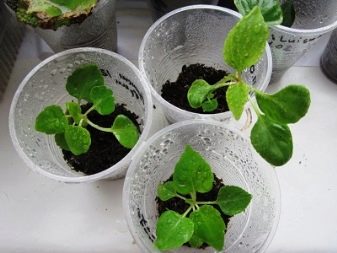

Common ailments, their treatment and photos
Gray rot
This is a fungal disease. It is characterized by the appearance of brown spots on the stems and leaves. If you do not take action in time, the flower will die.
The reasons:
- hypothermia;
- watering with cold water;
- drafts;
- low air temperature;
- soil contamination with spores of pathogenic fungi.
Treatment:
- Affected plant parts are cut with a sterile instrument to healthy tissue.
- The healthy part is sprayed with Fundazole from a spray bottle. Fundazol is a broad-spectrum systemic fungicide. Solution preparation: dilute 1 g of powder with 1 liter of water, stir until completely dissolved. Spraying is carried out carefully, all aerial parts of the plant must be treated.
- The indoor flower is transplanted into a pot with new soil. Before planting, the soil is also sprayed with Fundazole solution. The drug is diluted in the same proportion. Once in the soil, the fungicide prevents the development of the pathogenic fungus.
Before the procedure, the instrument (scissors or pruning shears) should be held in rubbing alcohol, and the sections should be sprinkled with charcoal powder or cinnamon.
Bacteriosis
It manifests itself in the form of watery spots, which quickly grow and acquire a brown tint.
The reasons:
- contaminated soil;
- dirty tools;
- excess moisture or fertilizer.
Treatment:
- Pruning diseased parts of the plant.
- Spraying with copper chloride (HOM). This is a fungicidal preparation of protective contact action. The solution is prepared in the proportion: 4 g of powder per 10 liters of water. Then the plant is carefully sprayed from all sides from a spray bottle.
- After 14 days, the procedure is repeated.
- The same solution should be sprayed on the soil.
What causes this disease?
The reasons
There are many reasons associated with yellowing of balsam leaves. Further, they will be listed in descending order, that is, from the most common to the least common.
- Pests.The most common pest, due to which leaves can turn yellow, is a spider mite (read here how to deal with a spider mite on balsam). The main problem is its "corrosiveness", that is, it is very difficult to remove it. This is due to the rapid spread of its larvae, which, in the state of the larva itself, are very stable with all kinds of means.
When trying to destroy this pest, it is necessary to process the plant at least 3-4 times a week.
- Air humidity. The problem is associated with the fact that most flower growers put balsam on the windowsill, and under it there can be batteries, heaters, and so on. All these heating devices dry the air, which is very critical for a moisture-loving plant.
- Improper watering. Here it is worth starting with the fact that the drying of the leaves can be associated with both insufficient watering and its excess. therefore, the correct amount of water for irrigation for each flower is supported empirically.
- Old soil. With a prolonged stay in one soil, balsam absorbs all minerals of the earth. This begins to deplete the soil and increase the acid level.
The transplant should be carried out in mid-spring and late summer.Also, drying out of the leaves can be associated with the poor quality of the soil, so the florist himself should mix the soil.
- Excessive lighting. Balsam is more close to being in partial shade, but direct sunlight on the plant should be avoided altogether. With excessive lighting, the leaves of the balsam will begin to dry out.
- The pot is too big. The pot should not be more than 1.2 times the size of the root system. Immediately there is an interweaving with watering, when watering from the edge of the pot, such watering leads to the accumulation of water and, as a result, decay of the root system.
Prevention - what to do?
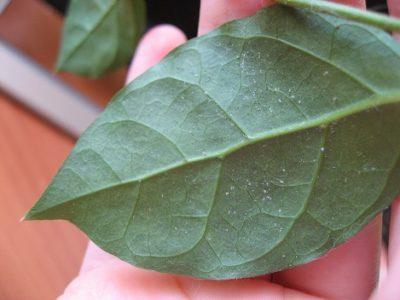

The actions to save the plant follow from the reasons. Therefore, the treatment will come from correcting the problems. Pests, as described above, are enough to pickle, and the agent must be strong.
A good option against mites would be a remedy that is in powder form in ampoules.
As practice has shown, such a tool is the most effective. Diseases such as "Gray rot" or "Powdery mildew" are treated by changing external conditions. For instance to combat dew, the grower needs to "dry" the air.
The air humidity can be changed by moving the balsam away from the heating appliances, or you can use a dehumidifier, since they work in both directions, that is, both dry and humidify the air.
How to correct watering was described above, the correct amount of watering is determined empirically. The problem with lighting, as well as with air humidity, can be corrected by rearranging the plant to the northern or western part of the windows.
Experienced flower growers advise to cut off all inflorescences before transplanting an already diseased plant. You should not be afraid, after the transplant, the balsam will begin to bloom itself, and the healing process will go much faster, because all the substances will go to restore the leaves.
Prevention can be attributed to the early improvement of the conditions for the existence of balsam.
- The flower grower must maintain optimal humidity, and the temperature in summer should not exceed 25 degrees Celsius, in winter the temperature should be about 10 degrees Celsius.
- At the same time, it is necessary to feed the plant in spring and summer, and due to the fact that balsam has a poorly expressed period of calm in winter, that is, it can bloom in winter, it is worthwhile to carry out a weak feeding.
- The transplant should be carried out in spring and summer, while preferably in the ground mixed by the florist himself.
- Watering should not be excessive, but do not forget about it in general.
- The lighting should be low.
With proper observance of these conditions, the leaves of the balsam will cease to fall., and the plant itself will be very bright and pleasing to the owner's eye.
Why do buds fall?
Often, beginner growers are faced with situations when the "Vanka wet" flower begins to shed its buds. The main reasons for this phenomenon include violations of the temperature and humidity regime, excess nitrogen in the soil mixture and potassium deficiency. Another reason that can cause the buds to fall is a draft. Balsams are very painful to tolerate drafts and cold snaps, which are stressful factors for them. It is also necessary to check the condition of the soil mixture in the pot. It should not be waterlogged.
Despite the fact that this flower loves regular watering, excess moisture in the soil can cause its roots to die off and buds fall off.
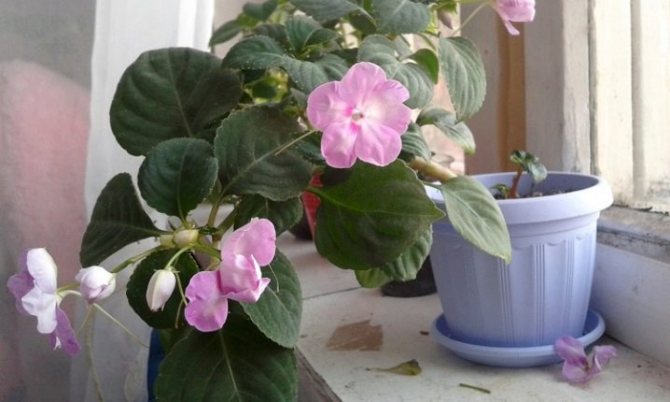

Plant Brief
Balsam is a perennial crop, with an erect stem and fleshy toothed foliage. The maximum height of the bush is 50 cm, the length of the leaf is 8-12 cm. The inflorescences are in the axils of the plant, their shade is varied (from delicate pink to deep red).
Balsam hybrids have double flowers. After the end of the flowering period, a fruit is formed - an elongated box, which consists of 5 twisted leaves.
Long flowering explains another name for balsam - Ogonyok. In different countries, this species also has different designations: Zealous Lisa in Germany, Vanka-wet in Russia.
If all else fails
Unfortunately, if the grower has started his plant very strongly, then all of the above tips may not work. The last resort will be to remove damaged foliage, as well as remove rotten parts of the root during transplantation. Further, it remains to hope only for a miracle. In any case, it is very difficult to bring a plant to such a state, so you should never forget about the plant.
In conclusion, I would like to say that balsam is quite whimsical, so we do not recommend keeping all problems to the last, because in this way a florist can easily kill his plant, and this clearly will not amuse him.
Although balsam has a very pleasant bonus for those who will follow it with special sensitivity, namely, the flower will bestow wonderful beauty on the caring owner, it is not for nothing that balsam has had the status of the most common home plant since the 16th century.
If you find an error, please select a piece of text and press Ctrl + Enter.
Balsam - diseases, effective treatment
Details
Rating: 5/5
Balsam or light is an unpretentious indoor plant to care for, which earned it popularity among beginner flower growers. However, this flower is affected by a variety of diseases. What causes diseases of balsam (it turns yellow, sheds leaves, balsam withers, ticks and thrips appear on it)? Experts will tell you about the causes of balsam diseases with a photo, their treatment.
Description of the main diseases of balsam with a photo, their causes and treatment
Buds and leaves fall on balsam, balsam leaves turn yellow, other plant diseases - how to treat and prevent. Why do balsam leaves fall?
The leaves of the balsam are falling, the balsam has dropped the buds. There can be several reasons for balsam's disease:
- if the plant was purchased recently, then it is undergoing an adaptation period. It will last up to 1 month. It is very important to provide normal care during this period. This is normal watering, feeding, spraying. A sign that the plant has not died and has adapted to new conditions of detention is evidenced by new leaves and stem tone;
- overdrying of soil. Overdried soil can crack and lag behind the edges of the pot. On a lack of moisture, balsam sheds leaves. In some cases, the balsam leaves turn yellow, in some they dry up without losing the color intensity. In some cases, balsam leaves curl. Correct watering of balsam - once a week, before the next watering, the soil in the pot should dry out, but not dry out, which will negatively affect the health of the flower;
- waterlogging of the soil is the most possible reason why the leaves of the balsam fall off, it drops the buds. The soil is considered to be waterlogged when it does not dry out from above on the second day after watering. The ideal option is when the soil in a pot, the diameter of which is more than 17 cm, dries out to the bottom within 1-1.5 weeks before the next watering. If the diameter of the pot where the balsam grows is less than 17 cm, then the soil in it should dry out in 1 week. If balsam leaves fall due to waterlogging of the soil, then the plant must be transplanted into a pot of smaller diameter. Before planting in the ground, the roots of the balsam are examined for rot. Rotten roots are removed, the cut sites are treated with crushed activated carbon. The soil for planting balsam, which has dropped the leaves, is taken universal, for flowering, indoor plants. Experts recommend adding a powder rooting agent to the balsam soil, for example, Potassium Humate, Ukorenit, Kornevin. They can also be lightly sprinkled with live balsam roots. After transplanting, watering needs to be adjusted. The flower is planted in slightly damp soil, the first watering is carried out after the soil has dried. It is recommended to add Zicron to the water for irrigation every time (2 drops per 1 glass of water, 5-6 drops per 1 liter of water). Top dressing can only be carried out a month after transplanting.
The balsam withers, its leaves fall. A light cobweb is visible on the stem of the plant. Balsam leaves are covered with yellowish specks; later, the leaves curl and dry out. Balsam's disease: spider mite. This pest up to 2 mm in size lives on the back of balsam leaves and feeds on its juice. Disease treatment: isolate the plant. Next, treat it with a solution of the drug (optional) Agravertiv, Aktarin, Avertiv, Aktellik. Carry out processing 2 times a week. Treatment is carried out up to 1 month. Since the cause of the emergence of spider mites on balsam is the high temperature of the air and its low humidity, it is recommended to carry out regular spraying of the flower. If the balsam is blooming, then you do not need to spray it. It is enough to put a bowl of water or moistened expanded clay next to the flower. To quickly cure the plant, it needs to arrange a cold shower, while the water temperature should not exceed +17 degrees. IMPORTANT! during such a shower, you need to cover the soil in the pot with plastic. Cold water can damage roots.
Balsam withers on one side. The cause of the disease: waterlogging of the soil. Control measures: normalize watering. To prevent the leaves of the balsam from withering, it should be watered only after the soil has completely dried. How to save the plant is described above.
You can get advice from a specialist in the treatment of balsam diseases on the forum.
You can read how to grow balsam from seeds in the article or find out on the forum on growing balsam from seeds.
Balsam leaves wither. Brown spots in the form of circles appeared on the leaves. The cause of the disease: waterlogging of the soil. Balsam is watered after the soil is completely dry in a pot.If the diameter of the pot reaches 17 cm, then watering is carried out once every 1.5 weeks. If the diameter of the pot is less than 17 cm, then the soil in it dries out faster, and therefore watering is carried out more often. Wet soil is a favorable environment for balsam diseases. To prevent their development, Fitosporin-M is added to the water for irrigation every other time.
Social buttons for Joomla
What to do and how to restore the flora?
Help for yellowing balsam is provided based on the identified cause.
If the plant suffers from dry air, it must be rearranged away from heating devices and regular spraying with clean, settled water should be established.
Watering problems
If the earthen lump with roots has been overdried, it is necessary to place the pot with the plant in a container with warm, well-settled water and leave there for 30-40 minutes. Poured in this way, "Vanka wet" can be placed under the bag for 12 hours for more effective recovery.
If the plant has been poured, remove it from the pot along with an earthen clod and carefully examine the roots for rot.
- If decay of the root system is detected, it must be carefully cleaned of soil and all affected areas removed with sharp scissors or a knife.
- After the procedure, balsam should be transplanted into fresh soil, after washing and scalding the old pot with boiling water or replacing it with a new one.
For better survival of the root system, it is recommended to treat it with a specialized compound to stimulate growth (for example, "Kornevin").
If the reason for the yellowing of the foliage is “poor” soil, it is recommended to feed the balsam with a specialized fertilizer. Both complexes for flowering indoor plants and specially designed for balsamic formulations are suitable.
If the plant is cramped in the old pot, it should be transferred into a larger container, which does not exceed the volume of the previous one by more than 1.2 times.
Important: the flowerpot chosen for transplanting should not be too high, since the roots of the balsam grow more in breadth than in depth.
It is categorically not recommended to completely remove the old soil: this can cause serious stress to the plant's root system. You should shake the flower slightly to clean it of excess soil, and in the process of transplanting, add the required amount of fresh soil to the pot.
Sunburn
It will no longer be possible to cure the leaves burned by the direct rays of the sun, so they should be removed, thereby facilitating the nutrition of the surviving parts of the plant. To avoid the appearance of new burns, the balsam must be rearranged to the west or east window. If the plant cannot be moved, it should be shaded at midday.
We suggest you familiarize yourself: Why potatoes should not be stored in the light
Why do the leaves curl?
There could be several reasons.
Important! Noticing that the plant is dying, and the shape of its leaves has changed greatly, it is important to carefully examine the flower for the presence of pests or traces of diseases. Inspection of the problem plant is best done using a magnifying glass.
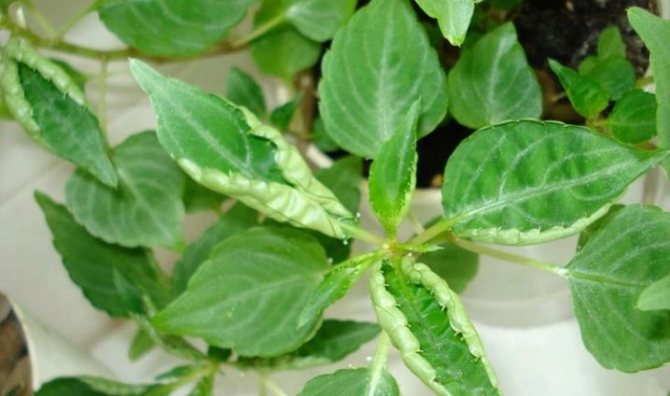

Features of the


Balsam leaves can be lanceolate or oval in shape. They are also quite fleshy and jagged around the edges. The color of the leaves is either green or purple-bronze.They are large in size and can reach a length of up to 12 centimeters.
Almost all diseases of balsam can be determined by the leaves, which is explained by their high sensitivity.
Also the leaves are quite fleshy, this is due to the supply of nutrients in them. But what if they wither, the plant discards them?

